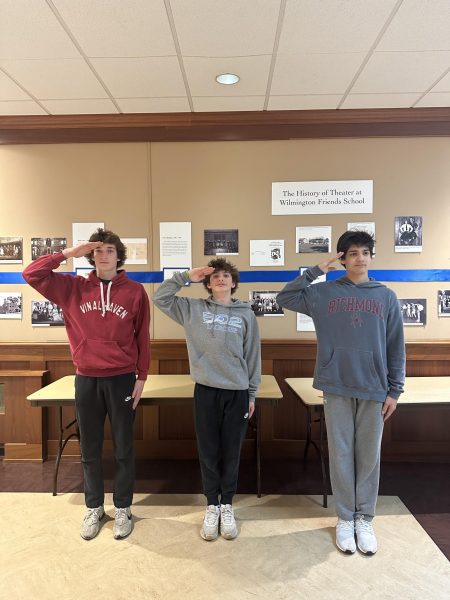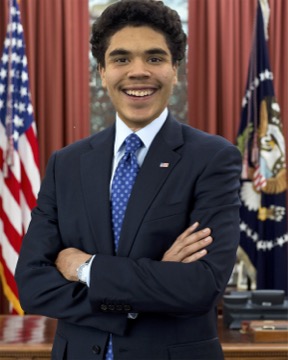Cracking the Code to Concussions
Holiday Issue: Innovation and the Mind
Before and after a concussion
A rapidly growing issue in youth athletics is concussions. Head injuries and concussions caused by contact sports have become an extensive problem in the United States, but they are a difficult thing to address and treat. A concussion is often caused by sudden and or repeated direct hits to the head. Head injuries are typically mild and often heal without many complications, but more severe ones can potentially cause serious or even permanent damage. Concussion rates, an estimated four to five million annually, show the impending need for further preventative measures. Many students at WFS have experienced concussions in athletics, or by a simple accidental hit to the head. Concussions, whether athletes like to admit it or not, have an extreme impact on both short and long term neurological function. Due to concussions becoming such an urgent problem in the U.S., it is important to learn about and be well informed of the preventative steps and technology behind concussions.
Athletic Trainer at WFS, Devon Adams, explains her work with concussions for student athletes: “Many times, athletes and parents ask why there is a 6 step Return to Play progression after concussion. The primary reason is that we want to protect student athletes from returning to play before they are fully recovered. Symptoms that have resolved at rest may return when heart rate, blood pressure, and overall exertion increase. The DIAA requires that all student athletes experiencing concussion symptoms see a physician for clearance and follow the protocol listed on the Acute Concussion Evaluation (ACE) form.” Students at WFS must follow six stages in order to return to sports: no physical or cognitive activity, low levels of activity (light jogging, light stationary bike), moderate levels of activity, heavy non-contact activity, full contact in controlled practice, and finally, full contact in game play. Patrick Haubert ’16 comments on the process of treating athletes with concussions at Friends: “Concussions are a part of contact sports; it’s a risk that we as players accept when we play the game, but at Friends we have great procedures in place to help minimize risk and injury time, in addition to an outstanding training staff. The training staff here is great. Devon knew right away when I had a concussion and was really helpful. She referred me to good doctors so that I could get back on the playing field as healthy and quickly as possible.”
In addition to the ACE form six stage protocol, another part of the formalities relating to concussions is the Baseline Concussion Test. The test is usually taken before the sport season(s), about every two years, when an athlete has not been subjected to training or competition yet. The Baseline Test is a computerized test that measures a person’s reaction time, memory, speed of mental processing, and executive functioning of the brain. Greg Smith ’17 comments, “The test includes a bunch of challenges that are used to evaluate different brain functions like recognizing and responding to different colors, memorizing specific lines and shapes, counting backwards from 25 in a certain amount of time, and memorizing a list of words and remembering them on both a short term and long term basis. According to how well you do in each of these challenges, it determines the severity of the injury.” By having baseline test information, it allows the athlete to take the same test by the athlete again, to compare pre- and post-injury scores. This increases the chances of diagnosing, treating, and ultimately preventing a concussion. Smith ’17 adds, “It helped the doctors realize the parts of my brain that had been affected by the impact and also helped me to heal by understanding what I needed to focus on in order to recover.” It is crucial to follow the appropriate procedural actions in order to safely and healthily address the issue of a concussion.
Recent research shows that high school athletes not only take longer to recover, but also tend to experience a greater severity of symptoms. Approximately 53% of high school athletes have sustained a concussion before participation in school sports, and 36% of collegiate athletes have a multiple concussion history. Many effects of concussions can cause severe and long term effects that will hurt the athlete later on in life. Some common signs of a traumatic brain injury include confusion, nausea, headaches, slurred speech, sensitivity to light, and sensitivity to noise. The frontal lobes of the human brain continue to develop until the age of twenty five, thus it is very important to take care of concussions and traumatic head injuries for optimal neurological development.
In the U.S., there are many models and new elements to technological equipment for preventing concussions. These products are advanced equipment to counter the traditional equipment used in sports by creating some type of new and/or extra construction to provide impact absorption and minimize the effects of forces against the head. Jack Coons ’18, explains, “Since I have had a few concussions, I use extra padding inside my lacrosse helmet. The padding helps reduce the force of the hits and therefore reduces the chances of another concussion.” In addition to simple innovative products like Coons’, there are also more sophisticated and progressive products. Two relatively recent developed and upcoming examples of preventative gear are Gamebreaker Headgear and Storelli Protective Head Guards. Alumna Elena Veale ’14, wears a similar head guard while playing field hockey at Haverford College. Sister Simone Veale ’17, explains, “It is for dulling the impact, so if something were to hit her in the head the band would help to stop the vibration and would soften the impact to her brain. By wearing it, it makes her feel more comfortable and more confident while she is playing. That is the most important part.”
Multiple traumatic brain injuries can affect the development of mild cognitive impairments, or cause chronic traumatic encephalopathy or post-concussion syndrome. Long-term effects that can emerge including memory problems, lack of inhibition, personality changes, problems organizing and problem solving, and language impairment. Older athletes who have previously suffered from concussions have symptoms similar to Parkinson’s disease. In addition, further testing shows that older athletes who had suffered from concussions experienced a thinning of the cortex – the same part of the brain that Alzheimer’s disease affects.
Concussions, although can seem inconsequential now, are likely to have detrimental effects on the brain and someone’s basic neurological functions. The preventative technology and protocols in recent years have become major components regarding the issue of an increase of concussions in youth athletics. Adams concluded, “The great thing about such updates is that we can get a better idea of how the individual athlete responds to testing. By knowing an individual’s strengths and weaknesses, we can better identify when there are deficits post injury. This helps twofold. First, we can accurately determine where an athlete is having the most difficulty and apply accommodations to help them in school. Second, it allows the athletic trainer and physician to determine when the athlete has fully recovered, indicating that it is safe to start return to sports.”






































